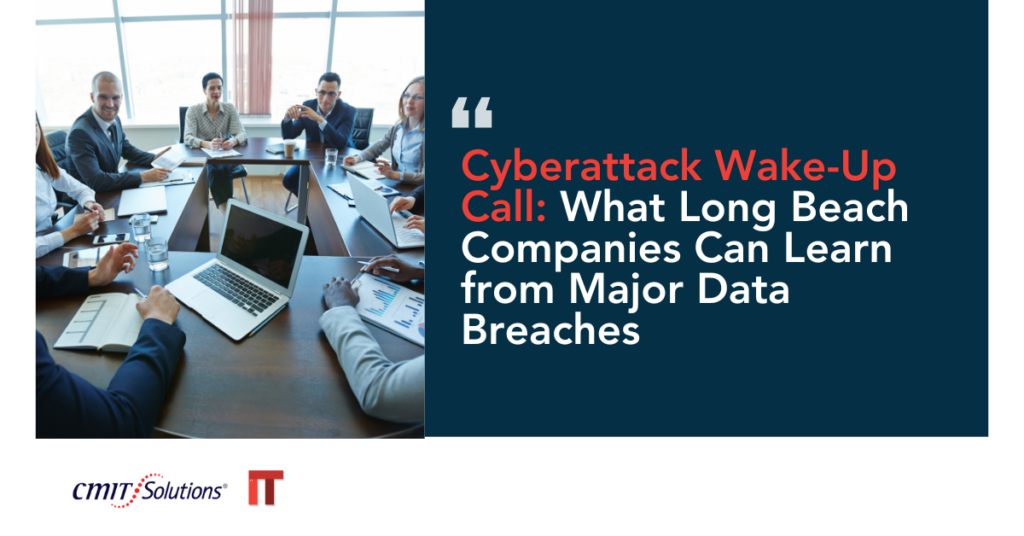For many organizations, compliance is a constant source of stress. Regulations evolve, new security threats emerge, and industry standards become more stringent every year. For small and midsized businesses (SMBs), these challenges can feel overwhelming—especially without a dedicated compliance officer.
The truth is that compliance doesn’t have to be chaotic. With strategic IT management, it’s possible to transform compliance from a dreaded burden into a structured, proactive part of your business operations. When the right technology, processes, and expertise come together, the “puzzle” begins to take shape—revealing a clear picture of security, efficiency, and trust.
Understanding the Compliance Landscape
Compliance refers to following the laws, regulations, and industry standards that govern how your organization handles data, conducts transactions, and serves customers. The requirements vary depending on the industry, but the stakes are high for everyone.
Healthcare providers, for example, must meet HIPAA standards for patient privacy. Retailers handling card payments follow PCI DSS guidelines. Businesses serving European customers must comply with GDPR. Even local businesses in Long Beach face regulations around cybersecurity, privacy, and data retention—challenges similar to those described in IT challenges for small businesses.
Failing to meet these obligations can result in penalties, lawsuits, and damage to your brand. But when you align IT strategy with compliance requirements, you gain more than legal protection—you build a foundation for trust.
Why Compliance Is a Moving Target
The hardest part about compliance is that it’s not static. Laws change. Standards are revised. Threat actors find new ways to exploit weaknesses.
Take data privacy as an example. Just a few years ago, encryption at rest wasn’t explicitly required in many regulations—today, it’s considered standard practice. Similarly, growing cyber threats have prompted more industries to adopt mandatory breach notification rules.
Without ongoing monitoring and updates, a business can easily slip out of compliance without realizing it. Strategic IT management solves this by continuously aligning technology policies with current regulatory standards.
The Cost of Getting Compliance Wrong
Non-compliance isn’t just a technical oversight—it’s a business risk.
- Fines and penalties can be financially devastating for SMBs.
- Reputational damage can drive away customers and partners.
- Operational disruption during audits or legal disputes can halt growth.
In some cases, the initial compliance failure stems from a preventable security breach. Companies that invest in AI-powered prevention are better positioned to avoid these costly incidents in the first place.
Strategic IT Management: The Compliance Game-Changer
Where many businesses go wrong is treating compliance as a separate task from IT. Strategic IT management integrates compliance into daily operations so it’s not an afterthought—it’s part of the way you work.
This means your authentication systems, data storage, and backup protocols are designed with compliance in mind. For example, implementing passkey-based authentication doesn’t just strengthen security—it also helps meet regulatory requirements for secure access control.
Building a Compliance-Ready Infrastructure
A strong IT infrastructure is the backbone of any compliance program. The more resilient and secure your systems are, the easier it is to demonstrate compliance.
Key elements include:
- Secure networks with proper segmentation.
- Cloud storage that integrates with secure backup solutions.
- Centralized monitoring to track all user and system activity.
Well-managed networks, similar to those described in network management best practices, make compliance less about scrambling for evidence and more about showing a clear audit trail.
Leveraging Managed IT Services for Compliance
For SMBs, maintaining in-house expertise in every compliance area is unrealistic. That’s where managed IT services can make the difference.
A provider experienced in proactive IT support can:
- Automate routine compliance reporting.
- Ensure system configurations align with current laws.
- Offer 24/7 monitoring to detect policy violations early.
This partnership turns compliance into a shared responsibility—removing much of the burden from internal teams.
The Role of Cybersecurity in Compliance
Security and compliance are inseparable. Regulatory frameworks like GDPR, HIPAA, and PCI DSS are built on the foundation of protecting sensitive data from unauthorized access.
Strategic IT management incorporates layered defenses—endpoint protection, encryption, and MDR/SIEM monitoring—to meet and exceed these requirements. The stronger your security posture, the less likely you are to fall out of compliance due to a breach.
New Subtopic 1: Compliance in Hybrid and Remote Work Environments
Remote work has complicated compliance by introducing more variables—personal devices, home networks, and cloud file sharing. Without clear policies, these factors can create gaps in both security and regulation.
Strategic IT management solves this by extending enterprise-level protections to all endpoints, no matter where they’re located. Employees connect via secure VPNs or Zero Trust networks, data is encrypted end-to-end, and compliance rules are enforced through centralized device management.
It’s not just about technology—it’s about ensuring that every remote worker understands their role in safeguarding compliance, reinforced through ongoing security awareness programs.
New Subtopic 2: Aligning Compliance with Business Growth
Many business owners fear compliance will slow down innovation, but the opposite is true when done strategically. By integrating compliance requirements into development cycles, new products and services can be launched without regulatory delays.
For example, expanding into new markets may require additional data privacy controls. Using flexible cloud security from day one ensures your systems can adapt without costly redesigns later.
Strategic compliance also makes your business more attractive to partners and investors who value operational transparency.
What Happens When Compliance Becomes Strategic
When compliance is woven into IT management:
- Audits are faster and less disruptive.
- Data security improves across the organization.
- Customers and partners have greater trust in your processes.
These benefits mirror the positive transformations seen in AI-driven business operations, where strategic planning turns a challenge into an advantage.
Conclusion: Solving the Puzzle for Good
Compliance doesn’t have to be the confusing, ever-changing puzzle it once was. By integrating it into your IT strategy, you move from a reactive stance to a proactive, controlled process. Strategic IT management doesn’t just keep you compliant—it makes your systems more secure, your workflows more efficient, and your reputation stronger.
With the right mix of infrastructure, security, and expert guidance, you can solve the compliance puzzle once and for all—and focus on what really matters: growing your business with confidence.






